chapter13 Protein Synthesis and modification
- 格式:ppt
- 大小:9.02 MB
- 文档页数:121
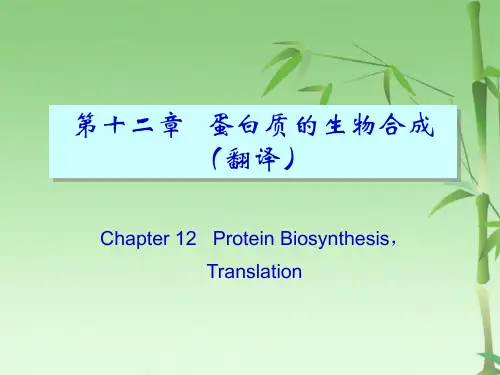
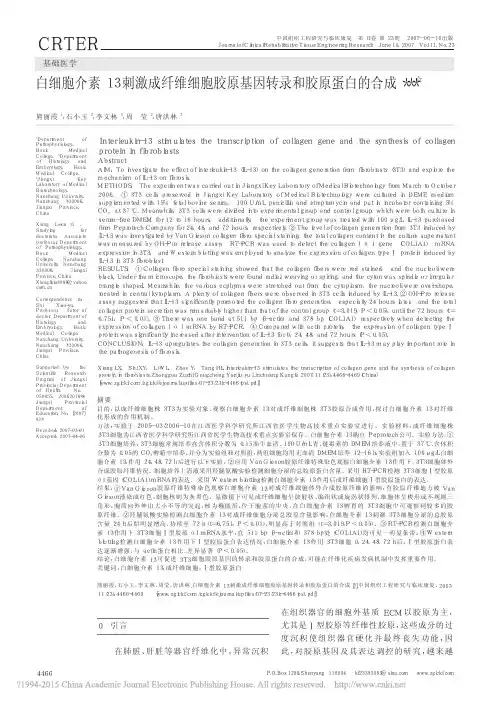

The Organization of International Business∙ Identify the different kinds oforganizational structures andinternal control mechanismsthat international businessescan use to manage globaloperations.∙ Discuss the advantages anddisadvantages of centralizedand decentralized decisionsystems.∙ Present the basic types oforganizational forms thatmultinational firms use.∙ Describe the control systemsand integrating mechanismsavailable to multinational firms∙ Show how the organizationalarchitecture, control systems,integrating systems, anddecision making choicesmultinational firms haveavailable must be consistentwith their strategy and industryenvironmentThis chapter identifies the organizational architecture that international businesses use to manage and direct global operations. The core argument outlined in this chapter is that superior enterprise profitability requires three conditions: First, the different elements of a firm’s organizational architecture must be internally consistent. Second, the organizational architecture must match or fit the strategy of the firm —strategy and architecture must be consistent. Third, the strategy and architecture of the firm must be consistent with competitive conditions prevailing in the firm’s markets. 13OUTLINE OF CHAPTER 13: THE ORGANIZATION OF INTERNATIONAL BUSINESSOpening Case: A Decade of Organizational Change at UnileverIntroductionOrganizational ArchitectureOrganizational StructureVertical Differentiation: Centralization and DecentralizationHorizontal Differentiation: The Design of StructureIntegrating MechanismsControl Systems and IncentivesTypes of Control SystemsIncentive SystemsControl Systems, Incentives, and Strategy in the International Business ProcessesOrganizational CultureCreating and Maintaining Organizational CultureOrganizational Culture and Performance in the International Business Synthesis: Strategy and ArchitectureLocalization StrategyInternational StrategyGlobal Standardization StrategyTransnational StrategyEnvironment, Strategy, Architecture, and PerformanceOrganizational ChangeOrganizational InertiaImplementing Organizational ChangeChapter SummaryCritical Thinking and Discussion QuestionsClosing Case: Strategic and Organizational Change at Black & DeckerTEACHING SUGGESTIONSIn order to get students thinking about the trade-off implicit in any strategic choice, this small group or individual exercise can be used at the beginning of class.You’ve developed very popular up-scale but reasonably priced clothing fashion line for young people, producing designs in a number of countries, manufacturing in low-cost locations, and with retail outlets in major US and European cities. Demand is popping and you have access to plenty of production capacity and capital. How should you organize the business outside the U.S.? Should you set up reasonably independent companies, subsidiaries, in each foreign market? What would that do and not do for you? Or do you want to impose a strict brand image, procedures, and central planning from headquarters, where your offices are? What are the plusses and minuses of that approach? TRANSITIONThe connection with the Unilever Opening Case is clear. They began with a decentralized system and have been rapidly moving towards increasing integration.∙Unilever is a $50 billion company selling more than 1000 products in virtually every country.∙Historically Unilever was organized into decentralized subsidiaries in each major national market. In the early 1990s there were 17 Unilever subsidiariesin Europe.∙Decentralization allowed local managers to respond to its unique market conditions and was a source of strength.∙Unilever worked hard to build a common culture to knit together a decentralized disparate organization.∙By the mid 1990s Unilever’s decentralized structure was working against its efforts to build global brands and cut costs in the face of competition.∙In 1996 Unilever introduced a new structure based on regional business groups.∙The 17 European companies relinquished autonomy in their markets to help develop a unified pan-European strategy.LECTURE OUTLINE FOR CHAPTER 13This teaching outline follows the PowerPoint presentation provided along with this instructor’s manual. The PPT slides include extensive notes that are printable under view—notes page. What follows is a summary.Slide 13-3 Opening Case: Organizational Change at UnileverWhen its structure was decentralized, Unilever used meetings and conference to create a common culture. However, there was still a lot of waste related to redundancy in the organization. The 1996 reorganization by regional business groups and the use of programs such as Lever Europe developed new capabilities in cost reduction as well as global product introduction.Slide 13-4 IntroductionOrganization architecture includes structure, control systems, incentives, processes, culture and people. Three consistency conditions must be satisfied for an organization to deliver profitability: architecture must be internally consistent; strategy and architecture must be consistent; strategy and architecture together must be consistent with the competitive environment of the firm.Slides 13-5, 13-6, 13-7 Organizational ArchitectureStructure and control systems establish decision-making responsibilities and integration mechanisms. Control systems measure and evaluate managerial performance and the performance of sub-units. Incentives connect to control systems, and processes need to be consistent with the strategic objectives of the organization. Efforts to shape values and norms in an organization are intricately linked to human resource practices, especially at the selection and recruitment stages.Slide 13-8 Organizational StructureVertical differentiation locates descision-making. Horizontal differentiation locates control boundaries (units/sub-units). Integrating mechanisms provide for coordination. Slide 13- 9 Centralization v. DecentralizationThe trade-offs here are control and local responsiveness.Slide 13-10 Horizontal Differentiation (HD)The typical entrepreneurial firm begins with no formal structure. As the firm grows, when the decision load becomes too intense for one person to handle, the firm is split into functions representing value creation activities. If growth continues, eventually the complexities of size push for the re-structuring of the firm into a divisional form.Slide 13-11 Typical Functional StructureSlide 13-12, 13-13 International DivisionThe International Division structure is organized by geography.Slide 13-14 Problems with the International StructureThese have to do with conflict between foreign and domestic, foreign managers given a secondary role, and lack of coordination.Slide 13-15 International Structural Stages ModelSlides 13-16, 13-17 Worldwide Area StructureThe world is divided into areas. An area may be a country or a group of countries. Each area is self-contained and autonomous. While this structure supports local responsiveness, it can lead to fragmentation because of lack of coordination across the areas.Slides 13-18, 13-19 Worldwide Product Divisional StructureSome firms shift to a worldwide product divisional structure as international growth increases. Each product division is autonomous and responsible for its own value creation activities. This gives managers latitude to realize location and experience curve economies. However, area or country managers tend to have little voice in this structure and this can have a devastating effect on local responsiveness.Slides 13-20, 13-21 Global Matrix StructureWhen a firm’s strategy simultaneously demands location and experience curve economies, local responsiveness, and internal transfer of core competencies the global matrix structure does the best job. It is an attempt to simultaneously capture the benefits of the worldwide area structure and the worldwide product divisional structure. The balancing act of the global matrix structure comes with its own challenges. It slows down decision making, increases the likelihood of conflict between the area structure and the product structure, and accountability is always a challenge when each manager has to wear 2 hats – one area-specific and one product-specific.Slide 13-22 Integrating MechanismsDifferent strategies make different demands on the manager in terms of the need for coordination.Slide 13-23 Impediments to CoordinationDiffering goals and lack of respect; different orientations due to different tasks; differences in nationality, time zone and distance.Slides 13-24, 13-25 Formal Integrating SystemsDirect contact, liaison roles, teams, and matrix structuresSlides 13-26, 13-27 Informal Integrating MechanismsInformal integration is a way around problems with the formal systems. It requires the organization have a teamwork spirit that embraces as many managers as possible in order to make informal mechanisms work. Two common techniques that are used to establish informal networks are; (1) the use of an appropriately designed information system (2) the use of management development policies that promote network behavior.Slide 13-28 Control systems and incentivesSlide 13-29 Factors that Influence Incentive Systems(1) The seniority of the employee and the nature of work done (2) The output target set for the employee and the degree of influence (3) The amount of cooperation between subunit managers (4) National differences in institutions and culture.Slides 13-30, 13-31 Performance AmbiguityPerformance ambiguity exists when the causes of a subunit’s poor performance are not clear and it is caused by the high degree of interdependence between subunits within the organization.Slide 13-32 Implications for Control and IncentivesThe costs of controlling transnational firms are higher than the costs of controlling firms pursuing other strategies.Slide 13-33 ProcessesIn a global enterprise many processes pose severe challenges to managers because they cut across organizational boundaries as well as national boundaries (e. g: product development). Also, valuable new processes that could create significant competitive advantage could develop anywhere in the firm’s global network.Slide 13-34Organizational CultureOrganizational culture is a social construct, a system of values and norms shared among people.Slide 13-35 Culture and PerformanceStrong cultures and adaptive cultures. The ―correct‖ culture is context-specific.Slide 13-36 Synthesis of strategy and ArchitectureSlide 13-37, 13-38 Organizational ChangeChange is often difficult to achieve due to organizational inertia. The inertia may arise from several sources: possible redistribution of power and influence among managers; strong existing cultur e; senior manager’s preconceptions about the appropriate business model; institutional constraints such as national regulations including local content rules regarding layoffs. Unfreeze-move to new state-refreeze.Slide 13-39 Looking Ahead to Chapter 14Entry Strategy and Strategic AlliancesANSWERS TO CRITICAL THINKING AND DISCUSSION QUESTIONS FOR CHAPTER 13QUESTION 1: "The choice of strategy for a multinational firm to pursue must depend upon a comparison of the benefits of that strategy (in terms of value creation) with the costs of implementing that strategy (as defined by organizational architecture necessary for implementation). On this basis, it may be logical for some firms to pursue a multi domestic strategy, others a global or international strategy, and still others a transnational strategy." Is this statement correct?ANSWER 1: Yes, this statement is correct. There is a cost-benefit trade-off with strategy choice. The costs of structure and controls for different strategies can differ widely. Transnational is usually very high, while localization is quite low. On the other hand, a localization strategy does not confer the many benefits of international, global, or transnational strategies. Remember that the strategy must fit with the competitive environment of the firm and the organizational structure and control systems of the firm must be consistent with its strategy. (See Table 13.2)QUESTION 2: Discuss this statement. "An understanding of the causes and consequences of performance ambiguity is central to the issue of organizational design in multinational firms."ANSWER 2: Organizational design creates interdependence, which may lead to performance ambiguities. Different organizational designs can remove performance ambiguities, shift them to a different level in the hierarchy, or create new performance ambiguities. It makes sense to analyze the cause of performance ambiguities as a part of the organizational design process. It also makes sense to analyze the opportunities for performance ambiguity that a new design might present. How an international company is organized (its architecture) may be a main reason a company does or does not perform well.QUESTION 3: Describe what organizational architecture a transnational firm might adopt to reduce the costs of control.ANSWER 3: A transnational, like all multinational firms, can use bureaucratic and output controls to some extent. However, the use of output controls is limited due to performance ambiguities. Bureaucratic controls are less effective when there are multiple lines of responsibility. Incentives for cooperation are one way to address this challenging issue. Another is the development of a strong culture. This culture could encourage cooperation by encouraging managers to buy into norms and value systems related to high performance. Such a culture could also give managers from interdependent sub-units an incentive to look for ways to work out any problems that might arise between them. A strong, success-oriented culture would lead to lower control costs.QUESTION 4: What is the most appropriate organizational architecture for a firm that is competing in an industry where a global strategy is appropriate?ANSWER 4: When a global strategy is appropriate, a company believes that its market is the world, and that it seeks economies of scale through the development and manufacture of a standardized product. An appropriate organizational architecture would be moderate decentralization with worldwide product divisions. There needs to be a lot of coordination, many integrating mechanisms, and a strong culture. Examples of companies pursuing global strategies are Intel, Motorola, and Texas Instruments.QUESTION 5: If a firm is changing its strategy from an international to a transnational strategy, what are the most important challenges it is likely to face in implementing this change? How can the firm overcome these challenges?ANSWER 5: The most important challenges are likely to be related to control, as the firm moves from at least a partial reliance on output measures and bureaucratic methods to one that will require many formal and informal controls and integration mechanisms. Significant performance ambiguities may occur with transnational strategies. A way to address these challenges is with a very strong culture and many integrating mechanisms. Examples of companies addressing the complex challenges of a transnational strategy are Ford, GM, Caterpillar, and ABB.CASE DISCUSSION QUESTIONSQUESTION 1: How would you characterize Black & Decker’s international expansion during the 1950s and 1960s? What strategy was the company pursuing? What was the key feature of the international organization structure that Black & Decker operated with at this time? Did Black & Decker’s strategy and structure make sense given the competitive environment at that time?ANSWER 1:Black & Decker’s early international expansion was localized, marked by great independence and decentralization. ―. . .All business functions (marketing, engineering, manufacturing, etc) are kept as close as possible to the market to be served‖—from the 1979 Annual Report. This strategy made sense at the time because there was little competition.QUESTION 2: How did the competitive environment confronting Black & Decker change during the 1980s and 1990s? What changes did Black & Decker make in its (a) strategy and (b) structure to compete more effectively in this new environment? ANSWER 2: In the 1980s and 1990s, competition increased. Bosch, Makita and Panasonic had entered the power tools game. Black & Decker’s former monopoly position in the sector now faced serious threat. To confront this threat, Black & Decker sought economies by closing factories, centralizing R&D, centralizing production decisions while keeping efficient local factories up and running, and rationalizing the workforce. This is an international strategy phase. The structural change was from a series of relatively independent subsidiaries to a more centralized organization. QUESTION 3: By the 2000s what strategy was Black & Decker pursuing in the global market place? How would you characterize its structure? Did the structure fit the strategy and environment?ANSWER 3: By 2002, Black & Decker moved their production to low cost global centers in China, Mexico and the Czech Republic, and did all their R&D and new product development work in two centers in the U.K. and U.S. Black & Decker has moved on to a global strategy phase, with production in low cost locations and R&D in areas that havea comparative advantage for that work. That means headquarters is making many decisions and there is little localization.QUESTION 4: Why do you think it took the best part of two decades for Black and Decker to effect a change in strategy and structure?ANSWER 4: The strategy seems to have evolved with changing competitive conditions. It must be quite difficult to be successful, own the market, as Black & Decker did in the 1980ies, and at the same time, figure out how to adapt to what has not yet happened, but what was inevitable: that competition would see their huge market and want a piece of it. Also, effecting structural and strategic change can be difficult and take a long time. globalEDGE™ Exercise Questions/U se the globalEDGE™ site to complete the following exercises:Exercise 1The Financial Times newspaper and the auditing firm PricewaterhouseCoopers conduct an annual survey and publish the rankings of World’s Most Respected Companies. PricewaterhouseCoopers provides the whole report downloadable as a PDF file. Locate the most recent ranking available and focus on the introductory analysis. Prepare an executive summary of the strategic and organizational success factors that make a company "most respected".Exercise 2The globalEDGE™ presents selected articles from the business print media under its Knowledge Room section. Locate the Selected Articles section and find an article that provides insights about the four key challenges facing firms in the globalization process. Prepare a description of these challenges and the solutions that the authors recommend. ANSWERS FOR globalEDGE EXERCISESChapter 13 – Exercise 1The World’s Most Respected Companies rankings can be located by searching for the name of the ranking at /ibrd/ibrd.asp. The resource is titled―Financial Times:World’s Most Respected Companies‖ and is located under the globalEDGE™ Category ―Research: Rankings‖. The rankings from are only available through subscription, but PricewaterhouseCoopers provides access to the results through a PDF download.Search Phrase: ―World’s Most Respected Companies‖Resource Name: Financial Times:World’s Most Respected CompaniesWebsite:/Extweb/ncsurvres.nsf/docid/D2345E01A80AC14885256CB0 0033DC8FglobalEDGE™ Category: ―Research: Rankings‖Chapter 13 – Exercise 2The selected articles section can be accessed via the ―knowledge room‖ web page at /KnowledgeRoom/KnowledgeRoom.asp. Also, the full list of the articles is located under the selected articles webpage at/KnowledgeRoom/SelectedArticles/index.asp. ―Th e Changing Face of Global Business‖ is an article published by the Optimize Magazine and can be reached at/article/showArticle.jhtml?articleId=21400849&pgno=1. Location: Knowledge Room / Selected ArticlesResource Name: The Changing Face of Global BusinessWebsite:/article/showArticle.jhtml?articleId=21400849&pgno=1 globalEDGE™ Category: ―Selected Articles‖SUGGESTED VIDEO NOTETitle 14: General Motors/SaabSummaryGM, the world’s largest automaker, is changing the way it does business. Despite profitability issues, the company has increased its R&D budget demonstrating its commitment to innovation. GM believes the way of the future requires the company to leverage its global engineering resources, relationships, skills, and knowledge. The company hopes that this global approach will eventually pay off in the form of higher profits. To that end, GM has established the Global Research Network designed to bring together technical expertise from around the world, and in the process, eliminate the traditional more isolated approach to innovation.GM’s new business model has required the company to make some substantial changesto the way its R&D division operates. The company is emphasizing collaboration between and among researchers, universities, national laboratories, suppliers, and even other auto manufacturers. To achieve its goal, GM is promoting physical meetings between researchers, e-mailing, net meeting, and so on. GM has also established a science center in Sweden that is situated such that not only are the technical people and manufacturing people physically very close, but they also have easy access to universities. This video relates to the material on strategic alliances in Chapter 14, the discussion of organizational culture in Chapter 13, the notion of strategy in Chapter 12, and material on R&D in Chapter 17.International Business: Competing in the Global Marketplace Sixth Edition Chapter 13 Discussion Questions1. GM is promoting a substantial shift in its corporate culture in the area of research, going from the traditional lone wolf mentality to a highly collaborative model. How can the company ensure the transformation occurs? What can the company do to facilitate the process?2. The SAAB brand is at the center of GM’s new business model. Will the model successfully extend to its other products? Why or why not?3. GM is promoting collaboration between its own researchers and researchers at other firms including the competition and the company’s suppliers. How can the company protect itself from opportunistic behavior from its research partners?4. GM has recently opened a new science office in Sweden. The company hopes that the center will benefit not only the SAAB brand, but the entire GM product line. Consider the center, its layout, how it came into existence, and so on. Can this type of center exist elsewhere in the GM network? Why or why not?199。

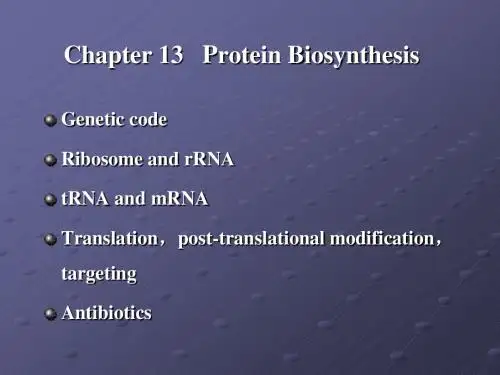
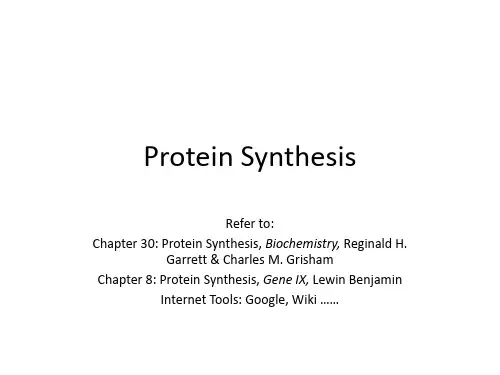
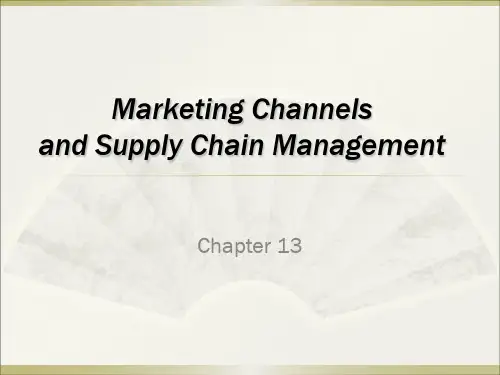
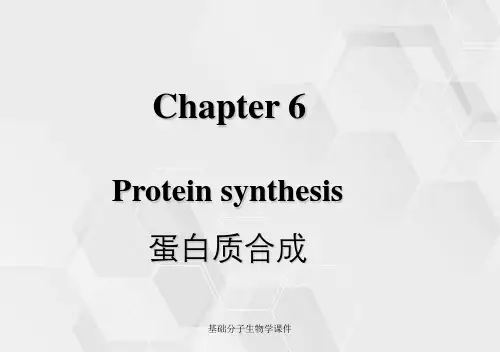
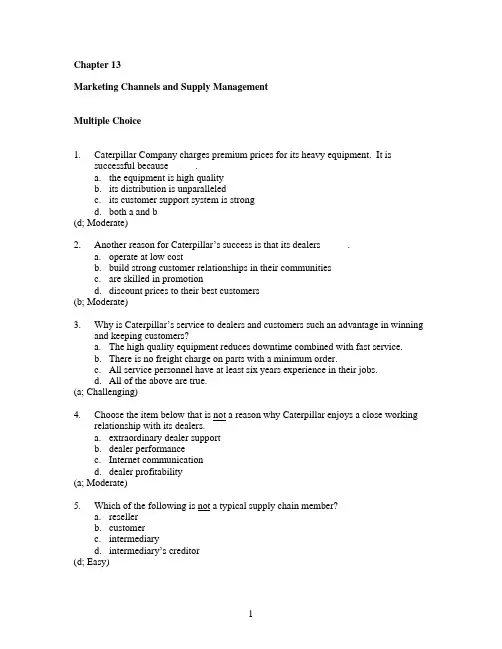
Chapter 13Marketing Channels and Supply ManagementMultiple Choice1.Caterpillar Company charges premium prices for its heavy equipment. It issuccessful because _____.a.the equipment is high qualityb.its distribution is unparalleledc.its customer support system is strongd.both a and b(d; Moderate)2.Another reason for Caterpillar’s success is that its dealers _____.a.operate at low costb.build strong customer relationships in their communitiesc.are skilled in promotiond.discount prices to their best customers(b; Moderate)3.Why is Caterpillar’s service to dealers and customers such an advantage in winningand keeping customers?a.The high quality equipment reduces downtime combined with fast service.b.There is no freight charge on parts with a minimum order.c.All service personnel have at least six years experience in their jobs.d.All of the above are true.(a; Challenging)4.Choose the item below that is not a reason why Caterpillar enjoys a close workingrelationship with its dealers.a.extraordinary dealer supportb.dealer performancec.Internet communicationd.dealer profitability(a; Moderate)5.Which of the following is not a typical supply chain member?a.resellerb.customerc.intermediaryd.intermediary’s creditor(d; Easy)6._____ from the manufacturer or service provider is the set of firms that supply theraw materials, components, parts, information, finances, and expertise needed to create a product or service.a.Downstreamb.Upstreamc.Separatedd.None of the above(b; Moderate)7. A better term for supply chain would be _____.a.supply and demand chainb.demand chainc.channel of distributiond.distribution channel(b; Easy)8.With the advent of the Internet, most companies are forming _____ with otherfirms.a.stronger relationshipsb.more numerous and stronger relationshipsc.more numerous and complex relationshipsd.more profitable relationships(c; Challenging)9.When suppliers, distributors, and customers partner with each other to improvethe performance of the entire system, they are participating in a _____.a.value delivery networkb.channel of distributionc.supply chaind.demand chain(a; Moderate)10.The logistics and distribution manager of BeltWay Enterprises, Inc. regularlydeals with the four major questions concerning marketing channels. Identify the one that is not associated.a.How do channel firms interact and organize to do the work of the channel?b.What is the nature of marketing channels and why are they important?c.What problems do companies face in designing and managing their channels?d.What role do financial and transportation members play in retaining customers? (d; Challenging)11.Most producers today sell their goods to _____.a.final usersb.final users and marketing membersc.intermediariesd.the government at various levels(c; Easy)12. A company’s channel decisions directly affect every other_____.a.channel memberb.marketing decisionc.customer’s choicesd.employee in the channel(b; Moderate)13.Distribution channel decisions often involve _____ with other firms.a.short-term commitmentsb.long-term commitmentsc.major problemsd.financial losses(b; Moderate)14.Joe Blanco has discovered that his intermediaries usually offer his firm more thanit can achieve on its own because of their contacts, experience, specialization, and _____.a.financial supportb.fast servicec.scale of operationd.working relationships with foreign distributors(c; Moderate)15.From the economic system’s point of view, the role of marketing intermediariesis to transform the _____ made by producers into the _____ wanted by consumers.a.products; productsb.assortment of products; productsc.products; assortment of productsd.assortment of products; assortment of products(d; Moderate)16.Producers benefit from using intermediaries because they _____.a.offer greater efficiency in making goods available to target marketsb.operate less expensivelyc.save a lot of workd.are generally backlogged with orders(a; Easy)17.Intermediaries play an important role in matching _____.a.dealer with customerb.supply and demandc.product to regiond.none of the above(b; Easy)18.What are the three gaps that separate goods and services from those who woulduse them?a.time, place, formb.place, possession, formc.time, place, possessiond.place, time, need(c; Moderate)19.One of the following is not a key function that intermediaries play in completingtransactions. Choose it.a.promotionrmationc.negotiationd.financing(d; Moderate)20.One of the following is not a key function that intermediaries play in helping tofulfill a completed transaction. Choose it.a.physical distributionb.promotionc.financingd.risk taking(b; Challenging)21.There is an old saying, “You can eliminate the middleman, but you cannoteliminate the _____.”a.middleman’s functionsb.profit lostc.time lostd.lost customers(a; Easy)22.In marketing terms, we say that the number of intermediary levels indicates the_____ of a channel.a.depthplexityc.involvementd.length(d; Easy)23.As a producer of goods, you would be concerned that a greater number of channellevels means _____ and greater channel complexity.a.less profitb.less controlc.more potential ideasd.all of the above(b; moderate)24.All of the institutions in a channel are connected by several types of flows,including physical flow, flow of ownership, payment flow, information flow, and _____ flow.a.promotionb.acquisitionc.customerd.return product(a; Challenging)25.An advantage of a channel of distribution over selling direct to consumers is thateach channel member plays a _____ in the channel.a.time-saving partb.specialized rolec.decisional rolermational role(b; Moderate)26.Joanie Calvert is experiencing a disagreement with intermediaries in the channelover who should do what and for what rewards. Joanie is experiencing _____.a.channel delusionb.channel problemsc.channel conflictd.channel mismanagement(c; Easy)27.When two Burger King restaurants have a disagreement over who should be ableto sell in quantity at a discount to local athletic teams, they are in a _____ conflict.a.verticalb.problematicc.no-wind.horizontal(d; Easy)28.Staples Office Supply opened an online store that created competition with manyof its dealers. The corporate office created _____ conflict.a.verticalb.problematicc.no-wind.horizontal(a; Easy)29.Historically, conventional channels have lacked the leadership to _____.a.assign channel member roles and attain efficiencyb.attain efficiency and assign member rolesc.assign member roles and manage conflictd.all of the above(c; Challenging)30. A conventional distribution channel consists of one or more _____ producers,wholesalers, and retailers.a.product-relatedb.independentc.contractd.estranged(b; Easy)31.An advantage of a vertical marketing system (VMS) is that it acts as a _____system.a.unifiedb.more efficientc.modernd.customer-driven(a; Challenging)32. A corporate VMS has the advantage of controlling the entire distribution chainunder _____.a. a profit-maximizing strategic planb.single ownershipc.mass distributiond.few intermediaries(b; Easy)33.What are the three major types of vertical marketing systems?a.corporate, contractual, chainb.contractual, corporate, independentc.corporate, contractual, administeredd.administered, independent, franchised(c; Moderate)34. A distinguishing feature of a contractual VMS is that coordination and conflictamong the independent members of the channel are attained through _____.a.oral agreementsb.working partnershipsc.limited liability corporationsd.contractual agreements(d; Easy)35.The most common type of contractual agreement in business is the _____.a.franchise organizationb.vertical marketing systemc.conventional marketing channeld.corporate VMS(a; Moderate)36.This is the scenario. You and your best friend are exploring the possibility ofbuying into a franchise but are not sure what type to go into. You discover that one of the following is not a common type and want to stay clear of it. Which one is it?a.manufacturer-sponsored retailer franchise systemb.manufacturer-sponsored wholesaler franchise systemc.wholesaler-sponsored retail franchise systemd.service-firm-sponsored retailer franchise system(c; Challenging)37.Leadership in this type of marketing system is assumed not through commonownership or contractual ties but through the size and power of one or a fewdominant channel members.a.horizontal marketing systemb.administered VMSc.corporate VMSd.conventional marketing channel(b; Easy)38.The most common type of hybrid marketing channel is the _____.a.dual distribution systemb.multichannel distribution systemc.administered franchised.horizontal multichannel system(b; Moderate)39.As marketing manager for Globe Imports and Experts, you want to start reapingthe benefits of a multichannel distribution system. You should enjoy all of thefollowing except one. Please find it.a.expand salesb.expand market coveragec.sell at a higher gross margind.gain opportunities to tailor products and services to needs of diverse segments (c; Challenging)40.The use of multichannel systems in the United States is _____.a.deceasingb.increasingc.holding steadyd.spreading abroad fast(b; Easy)41.The major disadvantage of a multichannel system is that it is harder to control andit can generate _____.a.greater conflictb.less net profitc.fewer domestic salesd.inefficiency(a; Easy)42.Studies show that _____ is a major trend whereby product and service producersare bypassing intermediaries and going directly to final buyers, or that radically new types of channel intermediaries are emerging to displace traditional ones.a.the vertical marketing systemb.the corporate marketing systemc.disintermediationd.the corporate merger(c; Challenging)43.Designing a channel system calls for analyzing consumer needs, setting channelobjectives, _____, and evaluating them.a.establishing a budgetb.identifying major channel alternativesc.seeking regulatory approvald.seeking legal advice(b; Moderate)44.To increase a channel’s service level, it must provide a greater assortment ofproducts, more add-on services, and _____.a.lower pricesb.become more efficientc.faster deliveryd.better terms(c; Moderate)45.In establishing add-on services, you would consider all except which of thefollowing?a.deliveryb.creditc.repairsd.customer assembly(d; Easy)panies should state their channel objectives in terms of targeted levels of_____.a.co-op advertisingb.fair pricesc.customer serviced.efficiency and reduced conflict(c; Moderate)47.Which type of product might require a more direct marketing channel to avoiddelays and too much handling?a.lower-priced productsb.perishable productsc.higher-priced productsd.products in their maturity or decline stage(b; Moderate)48.When identifying the major channel alternatives, it is best to consider in terms oftypes, number, and ___ of intermediaries.a.sizeb.powerc.responsibilitiesd.none of the above(c; Easy)49.When determining the number of channel members to use at each level, threestrategies are available: intensive, exclusive, and _____ distribution.a.multichannelb.selectivec.internationald.direct(b; Easy)50.Chewing gum is stocked in many outlets in the same market or community; infact, it is placed in as many outlets as possible. This is an example of _____distribution.a.exclusiveb.selectivec.multichanneld.intensive(d; Easy)51.This type of distribution is used when the producer wants more than one, butfewer than all, of the intermediaries who are willing to carry its products.a.exclusiveb.selectivec.intensived.dual(b; Moderate)52.Sometimes a producer chooses only a few dealers in a market area to distributeits products or services. Generally these dealers are given a right to _____.a.exclusive distributionb.selective distributionc.intensive distributiond.administered distribution(a; Easy)53.When establishing the responsibilities of channel members, the producer mustestablish a list price, give a fair set of discounts for intermediaries, and define each channel member’s _____.a.sales volumeb.territoryc.legal rightsd.customers(b; Moderate)54.Evaluating the major alternatives for channel members should be centered aroundall of the following except which one?a.economic factorsb.controlc.adaptive criteriad.channel leadership(d; Moderate)55.It is common for international marketers to _____ their channel strategies for eachcountry.a.extendb.adaptc.restrictd.seek approval for(b; Easy)56.It is especially difficult for many Western firms to break into the closely knittradition-bound _____ distribution network.a.Chineseb.Japanesec.Mexicand.Canadian(b; Moderate)57.China and India each contain more than a billion people. However, the markets areactually much smaller that they appear because of _____.a.inadequate distribution systemsb.indifference toward Western productsernment controld. a lack of resources(a; Challenging)58.You are faced with channel management at work. This calls for selecting,managing, _____, and evaluating channel members over time.a.reducing conflictb.reducing wastec.motivatingd.all of the above(c; Easy)59.When selecting intermediaries, a company should determine and evaluate eachchannel member’s years in business, other lines carried, growth and profit record, cooperation, and _____.a.reputationb.financial standingc.employees’ skillsd.executives’ ability to plan strategically(a; Challenging)60.Most companies practice strong PRM to forge long-term relationships withchannel members. What does PRM stand for?a.primary relationship managementb.potential relationship managementc.perennial relationship managementd.partner relationship management(d; Easy)61.Producers must regularly check channel member performance against standardssuch as which of the following?a.sales quotasb.average inventory levelsc.customer delivery timed.all of the above(d; Moderate)62.Sometimes a seller requires its dealers to abstain from handling competitors’products in an arrangement called _____.a.exclusive distributionb.exclusive dealingc.selective distributiond.exclusive pricing(b; Easy)63.For the most part, companies are _____ to develop whatever channelarrangements suit them.a.inclinedb.legally biasedc.legally freed.coerced(c; Moderate)64.Exclusive dealing is legal as long as it does not _____ or tend to create amonopoly and as long as both parties enter into the agreement _____.a.substantially lessen competition; legallyb.restrict trade; voluntarilyc.substantially lessen competition, voluntarilyd.none of the above(c; Challenging)65. _____ describes those arrangements whereby the producer of a strong brand sells itto a dealer only if the dealer will take some or all of the rest of the line.a.Exclusive distributionb.Exclusive dealingc.Exclusive tyingd.Tying agreement(d; Easy)66. Exclusive territorial agreements are normal practices in _____.a.vertical marketing systemsb.franchisesc.integrated marketing systemsd.horizontal marketing systems(b; Moderate)67. In today’s global marketplace, selling a product is sometimes easier than ______.a.making itb.advertising itc.getting it to the customerd.positioning it(c; Easy)68.Marketing logistics (physical distribution) involves getting the right product to theright customer in the right place at the right time. Which one of the following is not included in this process?a.planningb.implementingc.controlling the physical flow of goods, services, and informationd.gathering customer’s ideas for new products.(d; Easy)69. Today’s marketers prefer customer-centered logistics thinking. To be current intheir thinking, managers of ReadMore Magazines would consider all of these types of distribution except ______.a. outboundb. inboundc. inversed. reverse(c; Challenging)70.Why are companies placing greater emphasis on logistics?a.to give customers better service or pricesb.tremendous cost savings to the company and its customersc. a need for improved logistics managementd.all of the above(d; Moderate)71. For a company to minimize distributions costs, it must use slower delivery, smallerinventories, and ______.a. smaller shipping lotsb. larger shipping lotsc. eliminate small-order dealersd. reduce personnel in the supply chain(b; Easy)72. For Wilheight Company to provide maximum customer service, it must providerapid delivery, large inventories, liberal return policies, and _____.a. low cost merchandiseb. flexible assortmentsc. more credit optionsd. all of the above(b; Moderate)73. The difference between distribution centers and storage warehouses is that theformer are designed to _____.a. store goods for longer periodsb. hold larger volumesc. move goods rather than just store themd. none of the above(c; Easy)74. To reduce inventory management costs, many companies use a system where they carry only small inventories of parts or merchandise, often only enough for a few days of operation, called _____.a. reduction-inventory managementb. just-in-time logisticsc. limited inventory logisticsd. supply chain management(b; Easy)75. Which of the following transportation modes is used for digital products?a. truckb. railc. Internetd. air(c; Easy)76. This transportation mode is highly flexible in their routing and time schedules.a. truckb. railc. waterd. air(a; Easy)77. Jewels for the Rich and Famous sells very exclusive jewelry with a minimum price of $25,000 to customers around the world. Speed of delivery to distant markets is a must. Management should consider using _____ as its main carrier.raila.airb.truckc.(UPS)d.brown(b; Moderate)78. Grayville Rock and Gravel, located in a seaport town, sells rock, gravel, and sand tolocal markets. It has just been awarded a contract with a company 500 miles down the seacoast. Management should consider switching from truck to _____ transport.watera.b. railpipelinec.d. none of the above(a; Challenging)79. In choosing a transportation mode for a product, shippers must balance theconsiderations of speed, dependability, cost, and _____.weighta.choicecustomerb.availabilityc.distanced.(c; Challenging)80. Match these intermodal transportation combinations: 1. rail and truck, 2. water andtruck, 3. water and rail.trainshipairtruck;a.fishyback;fishybackairtruck;b.piggyback;c. trainship; fishyback; piggybackd. piggyback; fishyback; trainship(d; Moderate)panies manage their supply chains through _____.a. skilled operatorsb. informationc. the Internetd. transportation modes(b; Easy)82.When major producers or suppliers work directly with a major retailer in orderingand shipping products, they often use _____ to save much time and money.a. dual distribution modesb. continuous inventory replenishment systemsc. the Internetd. their own trucking and distribution systems(b; Challenging)83.Julie Newmar recognizes that her company needs to provide better customer serviceand trim distribution costs through teamwork, both inside the company and among all the marketing channel organizations. Julie will begin the practice of _____.a. integrated logistics managementb. supply chain managementc. customer relationship managementd. horizontal marketing system(a; Challenging)84.What is the goal of integrated supply chain management?a. reduce costsb. increase services with minimal costc. harmonize all of the company’s logistics decisionsd. reduce conflict and increase cooperation among channel members(c; Challenging)85. Smart companies coordinate their logistics strategies and forge strong partnershipswith suppliers and customers to improve customer service and reduce channel costs through _____.a. cross-functional teamsb. cross-company teamsc. partneringd. cross-functional, cross-company teams(d; Challenging)86. The success of each channel member depends on the performance of _____.a. key channel membersb. the entire supply chainc. the channel captaind. the manufacturer(b; Moderate)True – False87.The reasons for Caterpillar’s success is high-quality products, flexible and efficient manufacturing, a steady stream of innovative new products, and a lean organization that is responsive to customer needs.(True; Moderate)88. Caterpillar’s exceptional parts department gives it a high advantage in winning and keeping customers.(False; Easy)89. Producing a product or service and making it available to buyers requires buildingrelationships not just with customers, but also with key suppliers and resellers in the company’s supply chain.(True; Easy)90.. Supply chain is a common term used for a channel of distribution. It may be too limited because it takes a make-and-sell view of the business.(True; Moderate)91. With the success of the Internet, few producers sell through intermediaries today. (False; Easy)92. Companies often forget to pay enough attention to their distribution channels so asto make long-term commitments to other firms.(True; Moderate)93. A major role played by intermediaries is to buy large quantities of products frommany producers and break them down into the smaller quantities and broaderassortments wanted by consumers.(True; Easy)94. Members of the marketing channel perform many key functions, such as helping tocomplete information, promotion, contact, matching, and negotiation transactions.They can also help to fulfill the completed transactions like e-procurement,financing, and risk taking.(False; Challenging)95. A growing trend is to use a direct marketing channel, which has no intermediarylevels so the company sells directly to consumers.(True; Easy)96. It is safe to say that distribution channels are complex behavioral systems in whichpeople and companies interact to accomplish individual, company, and channelgoals.(True; Moderate)97. Judy Smith is the manager of the local McDonalds franchise in Carterville.Recently the home office did not let her participate in coop advertising like theother McDonalds in her district. Now she is irritated and demands fairness. This is an example of horizontal conflict.(False; Challenging)98. A conventional distribution channel consists of one or more independent producers,wholesalers, and retailers. Each is a separate business seeking to maximize its own profits, even at the expense of the system as a whole. No channel member hasmuch control over the other members, and no formal means exists for assigningroles and resolving channel conflict.(True; Moderate)99. When Sherwin Wong Paint Company integrates successive stages of productionand distribution under a single ownership and attains coordination and conflictmanagement through regular organizational channels, it is using a corporate VMS. (True; Challenging)100. The franchise organization is the second most common type of contractual relationship wherein a channel member called a franchiser links several stages of the production-distribution process.(False; Moderate)101. When the NewWay Dry Cleaners and The Easy Laundromat in your hometown join forces to follow a new marketing opportunity, they are forming a horizontalmarketing system.(True; Easy)102. Always Fresh Produce Company has a route selling to more than 100 groceries, schools, and restaurants at wholesale prices. Last week the owners opened up awalk-in discounted consumer produce outlet. Always is now using a multichannel distribution system.(True; Moderate)103. The faster the delivery, the greater the assortment provided, and the more add-on services supplied, the more the channel’s service level is restricted.(False; Challenging)104. Disintermediation as a trend is on the rise in U.S. business.(True; Easy)105. Generally speaking, a company’s marketing channel objectives are influenced by the level of customer service sought, the nature of the company, its products, itsmarketing intermediaries, its competitors, and the environment.(True; Moderate)105. Most companies identify their major channel alternatives in terms of types of intermediaries, the number of intermediaries, and the cooperation of each channel member.(False; Challenging)106. Intensive distribution seeks many outlets in a market, selective distribution seeks several outlets, and exclusive seeks only one outlet in a given market area. (False; Moderate)107. The producer and intermediaries need to agree on the terms and responsibilities of each member. They should agree on price policies, conditions of sale, territorialrights, and specific services to be performed by each party.(True; Moderate)108. Once marketers learn how to penetrate foreign markets and their distribution systems, all of them become a challenging but relatively easy job.(False; Easy)109. In managing its channels, a company must convince distributors that they can succeed better by working together as a part of a cohesive value delivery system. (True; Easy)110. A producer must regularly check each channel member’s performance against standards. These standards typically include sales quotas, average cash flow levels, customer delivery time, treatment of damaged and lost goods, and services to the customer.(False; Challenging)111. The tasks involved in planning, implementing, and controlling the physical flow of materials, final goods, and related information from points of origin to points ofconsumption to meet customer requirements at a profit describes supply chainmanagement.(False; Challenging)112. Some of the major corporations like Proctor & Gamble and General Motors have developed logistics systems that both maximize customer service and minimizedistribution costs.(False; Challenging)113. The key to managing inventory is to balance the costs of carrying larger inventories against resulting sales and profits.(True; Moderate)114. When shipping large amounts of bulk products such as forest products, coal, sand, or rock over large distances, large trucks are a good choice because of their low cost per ton shipped.(False; Easy)115. The basis behind integrated logistics management is providing better customer service and trimming distribution costs. This requires teamwork, both inside thecompany and among all the marketing channel organizations.(True; Moderate)Essay116. The terms supply chain and demand chain are limited. Explain why “value delivery network” is a more relevant expression to use.Supply chain takes a make-and-sell view of the business and demand chain takes a step-by-step linear view of the purchase-production-consumption activities. Value delivery network is more appropriate because it is made up of the company,suppliers, distributors, and ultimately customers who partner with each other toimprove the performance of the entire system.(Easy; p. 325)。
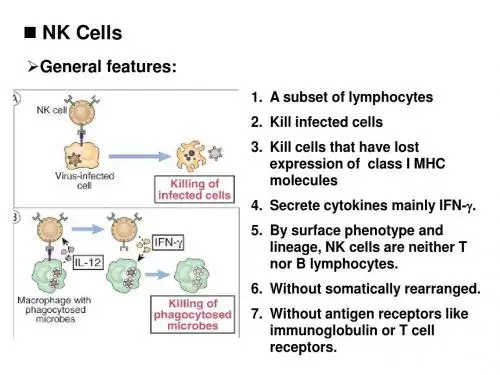
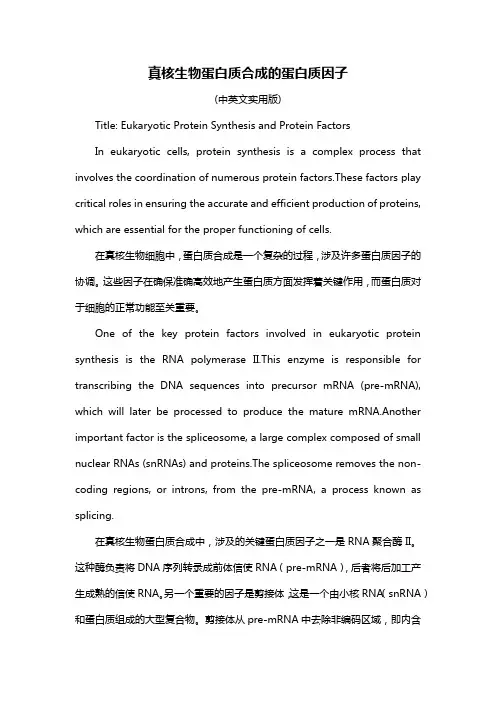
真核生物蛋白质合成的蛋白质因子(中英文实用版)Title: Eukaryotic Protein Synthesis and Protein FactorsIn eukaryotic cells, protein synthesis is a complex process that involves the coordination of numerous protein factors.These factors play critical roles in ensuring the accurate and efficient production of proteins, which are essential for the proper functioning of cells.在真核生物细胞中,蛋白质合成是一个复杂的过程,涉及许多蛋白质因子的协调。
这些因子在确保准确高效地产生蛋白质方面发挥着关键作用,而蛋白质对于细胞的正常功能至关重要。
One of the key protein factors involved in eukaryotic protein synthesis is the RNA polymerase II.This enzyme is responsible for transcribing the DNA sequences into precursor mRNA (pre-mRNA), which will later be processed to produce the mature mRNA.Another important factor is the spliceosome, a large complex composed of small nuclear RNAs (snRNAs) and proteins.The spliceosome removes the non-coding regions, or introns, from the pre-mRNA, a process known as splicing.在真核生物蛋白质合成中,涉及的关键蛋白质因子之一是RNA聚合酶II。
经济学原理曼昆课后答案chapter13 Problems and Applicat ions1. a. opportunity cost; b. average total cost; c. fixed cost; d. variable cost; e. total cost;f. marginal cost.2. a. The opportunity cost of something is what must be forgone to acquire it.b. The opportunity cost of running the hardware store is $550,000, consisting of $500,000 to rent the store and buy the stock and a $50,000 opportunity cost,since your aunt would quit her job as an accountant to run the store. Sincethe total opportunity cost of $550,000 exceeds revenue of $510,000, your aunt shouldn't open the store, as her profit would be negative she would losemoney.3. a. Since you'd have to pay for room and board whether you went to college or not, that portion of your college payment is not an opportunity cost.b. The explicit opportunity cost is the cost of tuition.c. An implicit opportunity cost is the cost of your time. You could work at a jobfor pay rather than attend college. The wages you give up represent an opportunity cost of attending college.4. a. The following table shows the marginal product of each hour spent fishing:b. Figure 13-7 graphs the fisherman's production function. The production function becomes flatter as the number of hours spent fishing increases, illustrating diminishing marginal product.Figure 13-7c. The table shows the fixed cost, variable cost, and total cost of fishing. Figure 13-8 shows the fisherman's total-cost curve. It slopes up because catching additional fish takes additional time. The curve is convex because there are diminishing returns to fishing time each additional hour spent fishing yields fewer additional fish.5. Here’s the table of costs:a. See table for marginal product. Marginal product rises at first, then declinesbecause of diminishing marginal product.b. See table for total cost.c. See table for average total cost. Average total cost is U-shaped. Whenquantity is low, average total cost declines as quantity rises; when quantity ishigh, average total cost rises as quantity rises.d. See table for marginal cost. Marginal cost is also U-shaped.e. When marginal product is rising, marginal cost is falling, and vice versa.f. When marginal cost is less than average total cost, average total cost is falling;when marginal cost is greater than average total cost, average total cost isrising.6. Fixed costs include the cost of owning or renting a car to deliver the bagels and thecost of advertising; they're fixed costs because they don't vary with output. Variable costs include the cost of the bagels and gas for the car, sincethose costs will increase as output increases.7. a. The fixed cost is 300, since fixed cost equals total cost minus variable cost. b.Marginal cost equals the change in total cost or the change in variable cost. That's because total cost equals variable cost plus fixed cost and fixed cost doesn't change as the quantity changes. So as quantity increases, the increase in total cost equals the increase in variable cost and both are equal to marginal cost.8. a. The fixed cost of setting up the lemonade stand is $200. The variable cost per cup is 50 cents.Figure 13-9b. The following table shows total cost, average total cost, and marginal cost. These are plotted in Figure 13-9.9. The following table illustrates average fixed cost (AFC), average variable cost (AVC), and average total cost (ATC) for each quantity. The efficient scale is 4 houses per month, since that minimizes average total cost.10. a. The following table shows average variable cost (AVC), average total cost (ATC), and marginal cost (MC) for each quantity.b. Figure 13-10 graphs the three curves. The margi nal cost curve is below the average total cost curve when output is less than 4, as average total cost is declining. The marginal cost curve is above the average total cost curvewhen output is above 4, as average total cost is rising. The marginal costcurve is always above the average variable cost curve, and average variablecost is always increasing.Figure 13-1011. The following table shows quantity (Q), total cost (TC), and average total cost (ATC)for the three firms:Firm A has economies of scale since average total cost declines as output increases.Firm B has diseconomies of scale since average total cost rises as output rises. Firm C has economies of scale for output from 1 to 3, then diseconomies of scale for greater levels of output.。